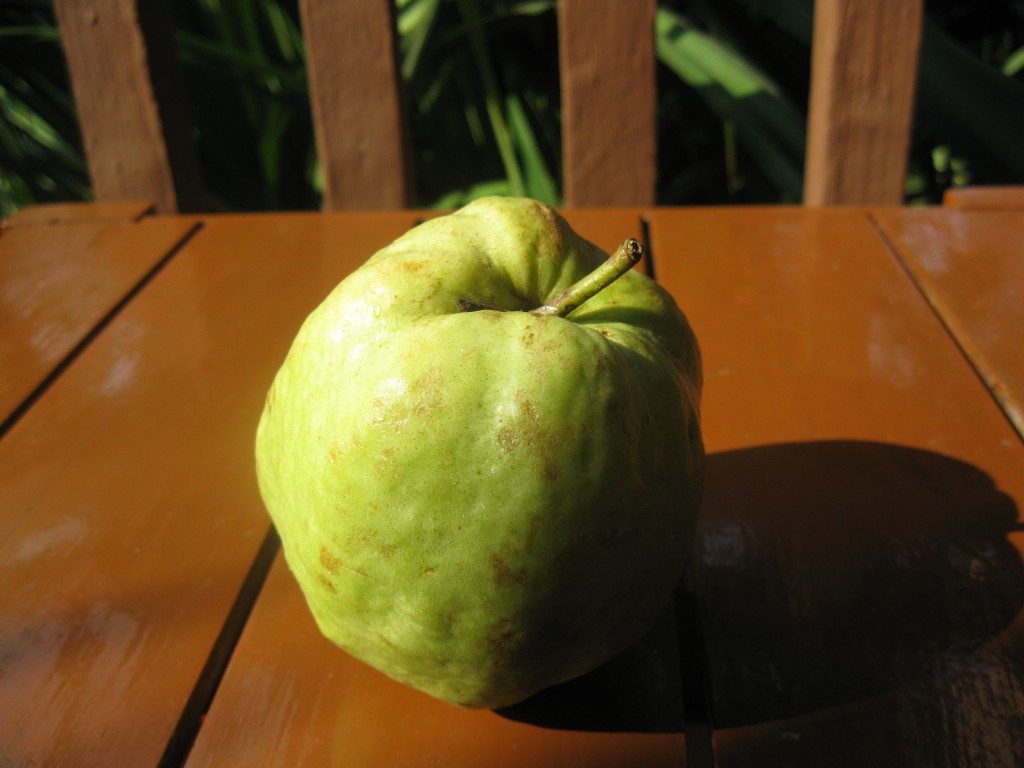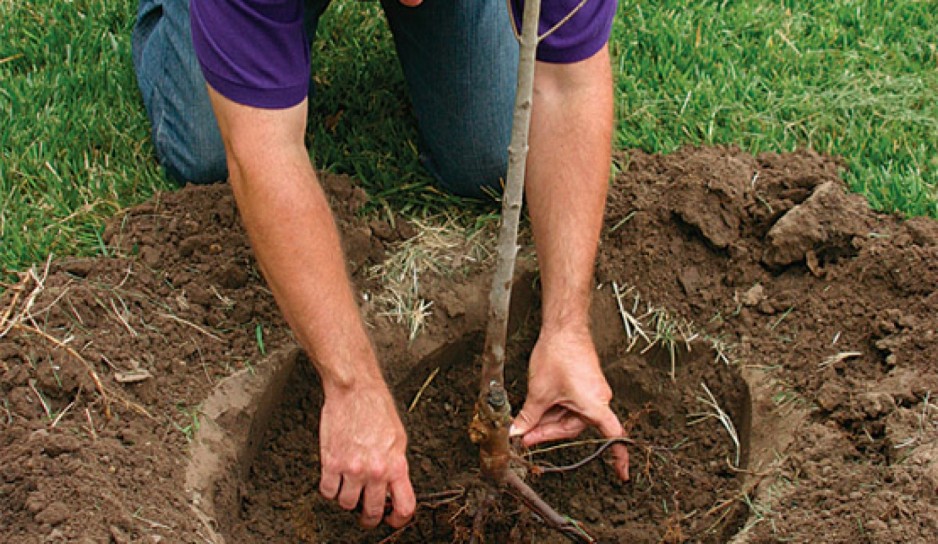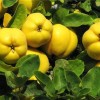Why does the quince bloom, but does not bear fruit?
Correct fit
The younger the seedling that is chosen for planting, the easier it is to take root in a new place. It is best to buy an annual plant with a well-developed root system and aerial part, or at least two years old. A closed root system planted with a native lump of earth is less injured during transplantation, but buying an open root, you can assess its condition, which is also not bad. The root should be healthy, without visible damage, small roots should not be dried out.
Planting can be done in spring and autumn, having prepared a place in advance, in the fall you need to have time to plant two, or preferably three weeks before the onset of frost, so that the roots have time to take root and form, if not new roots, then at least callus. A month and a half before that (and with a spring planting from autumn), fertilizers are applied. The soil must be well dug onto the bayonet of a shovel, or even deeper, free from all roots, compost or humus, superphosphate and potassium nitrate must be added. Quince grows well on fertile clay soils, on too light sandy soils they live less, bear fruit worse, although it enters the fruiting period even earlier.
A pit for quince is dug wide, but not very deep, since its roots do not grow very deep, preferring to grow closer to the surface. The usual size is up to half a meter deep and 90-100 cm in diameter.
A layer of clay is placed on the bottom of the pit, and a long-term supply of nitrogen fertilizers (compost or humus) is placed on top, which should be enough for two to three years. Sprinkle all this on top with garden soil, place the straightened roots and carefully fill them up so as to ensure the greatest adherence of the earth to the roots. This is facilitated by abundant watering, 2 - 3 buckets of water are poured under each seedling.
At the end of planting, the vaccination site should be 3 cm below ground level. Usually, a new tree is tied to a strong peg driven into the middle of the pit, and then the earth around is mulched with compost, peat, humus or just straw. In the spring, a 5 cm layer is enough, and in the fall it is better to make it twice as thick.
Pruning a tree for the first and second year is very important for its formation, it is done in the spring. Proper planting should be the key to the healthy development of the plant, if it is well received, receives sufficient care, then fruiting will begin in two to four years.
Video "Growing"
From the video you will learn how to properly grow this fruit tree.
Features of fruiting
How the quince blooms can be seen in the third or fourth year after planting it on the site, but whether this will lead to the appearance of fruits depends on several reasons. This culture is not self-fertile or conditionally self-fertile, as some experts cautiously put it.
This does not mean that plants are divided into male and female, it just needs pollen from a different tree variety for proper pollination.Although modern varieties do not need cross-pollination, at the request of their creators, it often happens that an abundantly and regularly flowering quince bush or tree does not form a single fruit with proper agricultural technology. In this case, the situation can be saved by planting a different variety of quince nearby or grafting on the same tree. Sometimes the quince is grafted onto the pear that grows on the plot, which helps to improve the yield of both crops. Some summer residents argue that for cross-pollination it is enough to have distant relatives of quince - apples and pears - on one site, but maybe they just got a really self-fertile variety.
Another reason that the quince blooms, does not bear fruit, may be frost damage to the pistils and stamens. To be convinced of this, it is enough to look inside the flowers. But the reason is frost that hit the green cone. A green cone is the period when the leaves have not yet formed, and the buds have already acquired a moist softness and a dull green tip, which is about to open with the first leaves. Quince blooms late, when the average daily temperature exceeds +17 degrees abroad, usually there are no recurrent frosts at this time (May, or even June), so people do not even suspect that frost can damage the flowers.
Differentiation of buds into leafy and fruit buds occurs in autumn (October - November) and spring (March - May), outwardly they do not differ in any way. It's just that when the time comes, flowers grow from the axils of some leaves. So at the stage of the green cone, there are already fruit buds, more vulnerable and tender than all the others, frost can easily damage them. If the cold already comes in October, then the main work remains in the spring, the return frost can spoil it. It is not for nothing that experienced gardeners monitor the air temperature, ready in April or even May to save tree branches by fumigating in order to protect them from frost with smoke.
Many gardeners in the spring, before bud break, carry out a preventive treatment against diseases and parasites, called blue spraying. The whole tree is sprayed with Bordeaux liquid, which has a beautiful blue color, this postpones for some time the moment the first leaves appear, that is, the period of the green cone comes a little later, thereby bypassing the return frosts. This helps to preserve future flowers, such a bonus or a side effect of protecting against diseases.
Growing conditions
It is believed that quince spread around the world from the Caucasus, it grows well in the Mediterranean, South-East and South-West Asia, wild trees and bushes settle on the banks of rivers, on forest edges. Not surprisingly, it prefers a lot of sunlight, tolerates heat well and does not bear fruit. At home on our plots, we create suitable conditions for her - clay moisture-retaining nutrient soil (she does not like acidic and salty soils), a sunny place.  But it is much more difficult to lengthen the summer and make the autumn warm, although the breeders have tried to bring out cold-resistant early-ripening varieties that can survive severe winter frosts, and their harvest ripens by the end of September.
But it is much more difficult to lengthen the summer and make the autumn warm, although the breeders have tried to bring out cold-resistant early-ripening varieties that can survive severe winter frosts, and their harvest ripens by the end of September.
Quince is a very courageous tree, it will grow even on sandy soils, lacking moisture, but the quality of the fruit will suffer from this. If the tree does not get the right amount of water, then the fruit will be smaller and even tougher and more viscous.
Therefore, it is imperative to water it, and each time pour at least two buckets of water onto the roots, and adult large trees will need all four.
In order for all branches and fruits to receive maximum sunlight, you need to monitor the density of the tree, regularly cut out those branches that want to grow inside the crown, those that close their neighbors from the sun. Each tree should grow within five meters of other large trees or buildings so as not to hide in their shade.Compliance with all these conditions, as well as agrotechnical rules, will ensure a rich harvest, and an adult tree can bring from 40 to 150 kg annually, and the ovaries are formed on branches of different ages, so there should be no periodicity.
Blossom video
From the video you will learn how an ovary is formed on this tree.



